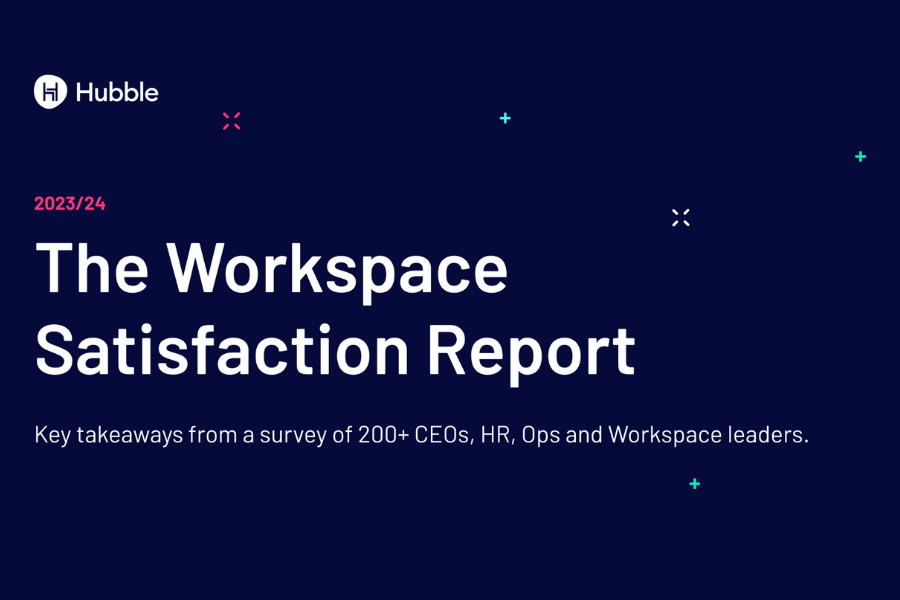Remote working certainly held its own during the pandemic. But once the dust settled, business leaders and employees alike were itching to get back together in person, to some varying degree.
For example, CEOs like Tim Cook and Andy Jassy were eager to get employees back into offices full-time. Hybrid companies carved out more social spaces in their offices. And fully remote companies invested more money into the company offsite, making it the year’s big event.

What we’re trying to say is…in-person working looks different for every company. Whether you’re fully-office-based, fully remote or have a hybrid model of working, it’s up to you to decide how in-person working works for your business goals and employees.
We just know it’s secured its place in the future of work — and our Workspace Satisfaction Report proved it all. We went out to 200+ business leaders in the UK to discover how they felt about workspace strategy, and all had strong opinions on in-person working.
Below, we summarise some of our key statistics so you get a snapshot of how in-person may work in the future. But if you’d like the full picture, you can download your free copy below! 👇

Business leaders favour in-person working
Most companies recognise the value of in-person working. 44% of fully remote companies agree that some degree of in-person working is important for maintaining company culture, closely followed by 43% of fully office-based companies and 38% of hybrid companies.
So, while remote working benefitted us during the pandemic, it’s clear that business leaders are actively finding ways to have their team meet face-to-face — regardless of whether they’ve got an office or not.
This could be to strengthen team bonds and get specific tasks done. For example, business leaders value in-person work for its ability to improve culture (40%) and collaboration (32%).
And of these leaders, CEOs are more likely to want their employees back into offices. This could be because they’re aware of the costs involved with having a full-time office, and they want to ensure they’re getting their money’s worth.
But what about office mandates?
We all know office mandates have stirred up controversy over the past few years. You only need to remember the open letters and petitions Apple employees addressed to Tim Cook in 2022 to get an idea.
So, when we asked our 200+ business leaders their thoughts on office mandates, we got some interesting stats. 68% said they’d be shifting strategies over the next year — and of those leaders ordering employees back into offices, 31% said they’d opt for a 2-day per week strategy.
This was followed by 3-days per week (16%), 4-days per week (15%) and full-time mandates (9%).
And if we break this down further, we can see the types of work business leaders want their employees to be together for. 36% of remote companies said they require in-person attendance for activities like departmental meetings, compared to only 17% of hybrid companies.
Download your FREE copy!

To gain a deeper understanding of the future of workspace, download the “The Workspace Satisfaction Report” — it’s absolutely free! With it, you can discover key insights, including:
🏢 Workspace strategies: Office, hybrid, or remote — what’s trending?
📅 Back-to-office plans: How often are leaders bringing employees back to the office?
📊 Measuring employee happiness: Explore effective methods used by UK business leaders!
Get ahead in the world of workspace. Grab the report for exclusive insights into 2023 office trends!
